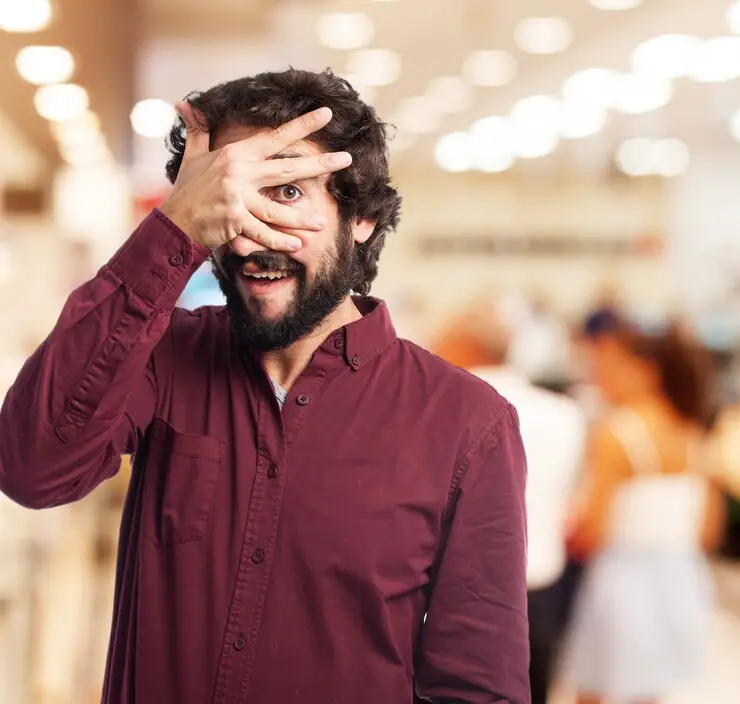NOTE:VIDEO AT THE END OF ARTICLE.
Our eyes—remarkably sophisticated yet undeniably fallible—can often deceive us, presenting illusions that challenge our very understanding of reality. In a world saturated with imagery and rapid digital impressions, optical illusions serve as compelling reminders that what we see may not always be the whole truth. They urge us to look twice, inviting us to explore the subtle interplay between perception, cognition, and the hidden depths of ordinary photographs. This phenomenon is not merely a quirk of human vision; it is a window into the complex mechanisms of our brain and the artful ways in which our senses interpret the world around us.
In a recent series curated by Viral Strange, a platform dedicated to highlighting the unusual and perplexing facets of visual culture, a collection of images was presented that compels viewers to pause—and then look again. These are not just pictures; they are visual puzzles that transform everyday scenes into enigmatic narratives, challenging us to question our assumptions and see beyond the surface.
The Mystery Behind the Illusion
At first glance, an optical illusion might appear straightforward. A bustling cityscape, a serene natural landscape, or even a simple geometric pattern seems clear and unambiguous. However, a closer inspection reveals layers of ambiguity. One iconic example is the classic “vase or two faces” illusion. In this image, the boundary between a central vase and the profiles of two faces is ambiguous, causing our perception to flip between these two interpretations. This duality lies not in the complexity of the image itself, but in how our brains are wired: we naturally impose order, seeking familiar forms in what might otherwise be random or ambiguous patterns.
This peculiar behavior of our visual system is both a strength and a vulnerability. On one hand, it helped our ancestors survive by enabling the rapid detection of predators or prey. On the other, it can lead us astray in modern life, where the stakes are less about survival and more about misinterpretation. When an image plays with contrast, color, and symmetry, it can momentarily baffle even our most practiced eyes, inviting us to re-examine the scene. Such is the power of optical illusions—they transform simple pictures into exercises in cognitive flexibility and invite us to experience the thrill of discovery.
A Second Glance: Discovering the Unseen
Viral Strange’s curated series draws our attention to several images that, upon a second look, reveal hidden dimensions and unexpected details that remain elusive at first. Consider an image of a twilight city skyline. Initially, the scene exudes the familiar hum of urban life—buildings glistening with reflective glass and neon lights flickering in the dusk. Yet, as one scrutinizes the photo, the reflections in a nearby body of water begin to shift, revealing an almost imperceptible inscription or a pattern that was not immediately visible. In another instance, a picture of a quiet rural landscape challenges the viewer: what initially appears to be nothing more than a field of wildflowers might, upon closer examination, hide a subtle play of light that alludes to a deeper, almost surreal pattern in nature.
This “second look” phenomenon is not accidental. These images are deliberately composed—or sometimes fortuitously captured—such that their full meaning is unveiled only after several layers of scrutiny. It is in these moments of revelation that the viewer’s engagement deepens. Rather than passively absorbing information, we become active participants in a visual dialogue. We question, we re-evaluate, and we ultimately expand our understanding of what it means to see.
The Science of Seeing
The allure of optical illusions extends well beyond mere entertainment. For researchers and neuroscientists, these illusions offer important clues about the architecture of the human brain. By studying how and why optical illusions occur, scientists can better understand the processes behind visual perception and the brain’s tendency to complete patterns. Our visual cortex, responsible for processing imagery, is constantly deciphering and making sense of a vast amount of visual data. When presented with images that defy easy explanation, the brain attempts to resolve the ambiguity by oscillating between multiple interpretations. This very mechanism, integral to our capacity for pattern recognition, underlies the magic of optical illusions.
The implications of these phenomena are far-reaching. In design and architecture, for instance, professionals harness the principles of optical illusions to create the impression of additional space or to accentuate certain features within a building. In psychology, studies of optical illusions have shed light on how individual differences in perception can influence everything from artistic preferences to the susceptibility to certain visual disorders. Thus, when we encounter an image that challenges our initial interpretation, we are not merely looking at a clever trick; we are witnessing a profound interplay between biology, art, and culture.
Optical Illusions as Metaphor: A Deeper Reflection
Beyond their scientific intrigue, optical illusions resonate as powerful metaphors for life itself. They remind us that our first impressions are not always complete, and that truth can often be more complex than it appears. Just as a photograph might hide layers of meaning that only reveal themselves upon closer inspection, the experiences of life—relationships, opportunities, and even failures—often contain hidden depths that require us to look beyond the surface.
Consider the figurative meaning of “looking twice” in our personal lives. Oftentimes, we are quick to judge a situation or a person based on immediate appearances, only to later discover that initial perceptions were incomplete or misleading. In this way, optical illusions serve as gentle, yet persistent, reminders that there is beauty and truth in ambiguity. They encourage us to take a step back, to reassess, and to recognize that the world is full of nuance—an idea that can inspire both personal growth and empathy.
The Role of Digital Media in Shaping Visual Culture
In the era of social media and viral content, platforms like Viral Strange have transformed the way we encounter and interact with optical illusions. No longer confined to academic journals or art galleries, these captivating images have found a vast audience online, where they are shared, dissected, and celebrated by millions. Digital media have democratized the art of visual puzzles, inviting people from all walks of life to participate in a global conversation about the nature of perception.
On platforms like Instagram, Twitter, and Facebook, optical illusions often spark lively debates and enthusiastic analyses. Users post side-by-side comparisons—one image revealing the initial perception, and the other showing the hidden layer that appears upon closer inspection. These exchanges not only entertain but also educate, fostering an appreciation for the complexity of human vision and encouraging viewers to engage with art and photography more critically.
Moreover, the viral nature of these images has a profound cultural impact. They encourage curiosity and a habit of mindfulness, urging us to pause amidst our frantic scrolling and consider the deeper realities that lie beneath the veneer of everyday images. In a society inundated with rapid-fire content, taking the time for a “second look” can serve as a form of digital mindfulness—an act of resistance against superficial consumption.
A Call to Re-examine: The Importance of Taking a Second Look
In daily life, we are frequently bombarded with images that pass by in a blur—snapshots from our smartphones, advertisements in bustling streets, or fleeting moments captured on social media. Yet, the optical illusions highlighted by Viral Strange remind us that there is often more than meets the eye. By taking a moment to step back and truly engage with an image, we open ourselves up to new ways of seeing and understanding.
This practice of looking twice is not limited to visual experiences alone. It becomes a metaphor for how we approach life’s challenges: with patience, curiosity, and a willingness to look beyond the obvious. In relationships, work, and personal growth, the initial impression can often mask deeper truths that reveal themselves only after careful reflection. Cultivating the habit of re-examination can lead to richer experiences, more informed decisions, and ultimately a deeper connection with the world around us.
The Enduring Fascination with Optical Illusions
What makes optical illusions so enduringly fascinating is not just their ability to trick the eye, but also the profound questions they raise. They challenge us to confront the limitations of our perception and to acknowledge that our senses, while powerful, are not infallible. This realization, in turn, instills a sense of humility and wonder—a reminder that the world is far more mysterious and intricate than our immediate perceptions might suggest.
The beauty of an optical illusion lies in its ability to merge art and science seamlessly. It captivates the viewer with its aesthetic charm while simultaneously inviting us to ponder the neural pathways and cognitive processes that govern vision. In doing so, it bridges the gap between the subjective experience of beauty and the objective study of human perception—a union that enriches both fields and deepens our appreciation of the human mind.
Conclusion: Embracing the Unseen with Curiosity and Mindfulness
As we navigate a world awash with images, the optical illusions showcased by Viral Strange serve as gentle yet potent reminders that our perception is a dynamic, ever-evolving process. They invite us to pause, to look again, and to appreciate that what we see at first glance may be only a fraction of the full story. In doing so, we not only gain a deeper understanding of our own cognitive processes but also foster a more thoughtful, mindful approach to everyday life.
Next time you encounter a picture that leaves you momentarily perplexed or compels you to take a second look, embrace that moment of curiosity. Allow yourself the pleasure of discovery, and in doing so, remember that the act of truly seeing is not as simple as it appears. Our eyes, remarkable though they are, sometimes need the reminder that seeing is an active journey—a journey filled with surprises, learning, and the endless potential to view the world anew.
In this modern age of rapid content and fleeting images, the timeless lesson of optical illusions remains clear: always be willing to look twice, for in that extra moment of reflection lies the power to uncover a hidden depth of understanding—a reminder that the most ordinary moments can often hold extraordinary secrets if only we choose to see them.
https://youtu.be/TNihRUCuaPo

Adrian Hawthorne is a celebrated author and dedicated archivist who finds inspiration in the hidden stories of the past. Educated at Oxford, he now works at the National Archives, where preserving history fuels his evocative writing. Balancing archival precision with creative storytelling, Adrian founded the Hawthorne Institute of Literary Arts to mentor emerging writers and honor the timeless art of narrative.
